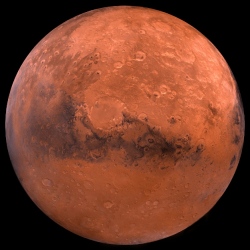
Europe is going to investigate a second site on Mars as a possible destination to send its 2021 rover. Scientists spent two days considering the options and plumped in the end for Mawrth Vallis – an area rich in clay minerals that must have formed during prolonged rock interactions with water.
Mawrth joins Oxia Planum, which was selected for study in 2015. The European Space Agency’s ExoMars rover will carry a suite of instruments to search for past or present life.
It will use a drill to bore up to 2m into the ground, to find samples for analysis that have not been sterilised by the planet’s harsh environment.
The launch of the robot from Earth was due to take place in 2018 but this has now been pushed back by two years because of hold-ups in the preparation of hardware.
Although disappointing, the delay has at least allowed scientists to consider in detail a wider selection of potential landing sites.
Engineering constraints, including the angle of approach to the Red Planet, meant that only Oxia Planum was really suitable for a mission launched in 2018 (the cruise to Mars takes eight months).
A launch in July 2020 (and touch-down in March 2021) brought back into play two sites of interest that had originally lost out to Oxia.
Mawrth Vallis has long interested scientists. The terrain is ancient and there is a feeling that if life has ever existed on Mars, this might be the kind of area that would retain evidence of its presence.
Aram Dorsum was the other candidate on the table during the two days of discussions at Esa’s technical centre in Noordwijk in the Netherlands. Aram contains a large channel. The sedimentary rocks around this channel may well be the consequence of flood deposits.
But in the end, the Noordwijk meeting voted in favour of Mawrth, and this was then endorsed by the ExoMars Landing Site Selection Working Group (LSSWG).
